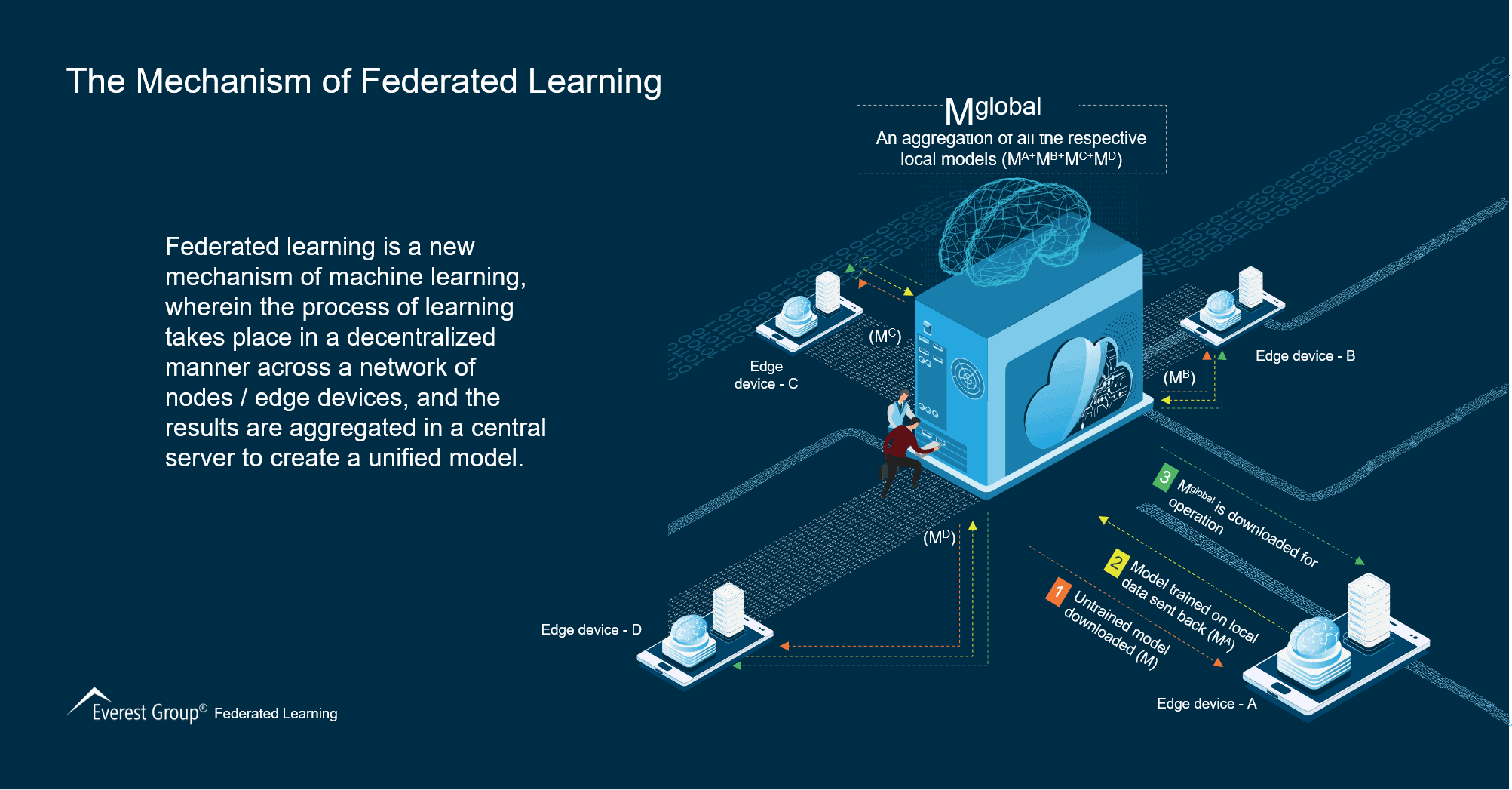Blog
Federated Learning: Privacy by Design for Machine Learning

With cyberattacks and data breaches at all-time highs, consumers are increasingly skeptical about sharing their data with enterprises, creating a dilemma for artificial intelligence (AI) that needs massive data to thrive. The nascent technology of federated learning offers an ideal growing alternative for healthcare, life sciences, banking, finance, manufacturing, advertising, and other industries to unleash the full potential of AI without compromising the privacy of individuals. To learn how you can have all the data you need while protecting consumers, read on.
Privacy preservation with federated learning
The infinite number of massive data breaches that have stripped individuals of their privacy has made the public more aware of the need to protect their data. In the absence of strong governance and guidelines, people are more skeptical than ever about sharing their personal data with enterprises.
This new data-conscious paradigm poses a problem for artificial intelligence (AI) that thrives on huge amounts of data. Unless we can figure out a way to train machines on significantly smaller data sets, protecting the privacy and data of users will remain key obstacles to intelligent automation.
Federated learning (FL) is emerging as a solution to overcome this problem. Broadly speaking, Federated learning is a method of training machine learning models in a way that the user data does not leave its location, keeping it safe and private. This differs from the traditional centralized machine learning methods that require the data to be aggregated in a centralized location.
Federated learning is a mechanism of machine learning, wherein the process of learning takes place in a decentralized manner across a network of nodes/edge devices, and the results are aggregated in a central server to create a unified model. It essentially comprises decoupling the activity of model training with centralized data storage.

By training the same model across an array of devices, each with its own set of data, we get multiple versions of the model, which, when combined, create a more powerful and accurate global version for deployment and use.
In addition to training algorithms in a private and secure manner, Federated learning provides an array of other benefits such as:
- Training across data silos
- Training on heterogeneous data
- Lower communication costs
- Reduced liability
Federated learning applicability and use cases
Based on an Everest Group framework, we have found Federated learning is most suitable and being adopted at higher rates in industrials where data is an extremely critical asset that is present across different locations in a distributed fashion and privacy is paramount.
Federated learning is especially beneficial for industries that have strict data residency requirements. This makes the healthcare and life-sciences industries perfect candidates for its adoption. Federated learning can help facilitate multi-institution collaborations between medical institutions by helping them overcome regulatory hurdles that prevent them from sharing patient data by pooling data in a common location.
The next industry ripe for the adoption of Federated learning is the banking and financial sectors. For instance, it can be used to develop a more comprehensive and accurate fraud analytics solution that is based on data from multiple financial entities.
Another industry where we see high applicability of Federated learning is the manufacturing industry. By ensuring collaboration between different entities across the supply chain, using Federated learning techniques, there is a case to build a more powerful model that can help increase the overall efficiency across the supply chain.
Federated learning also might find increased use in interest-based advertising. With the decision to disable third-party cookies by major internet browsers, marketers are at a loss for targeted advertising and engagement. With Federated Learning, marketers can replace individual identifiers with cohorts or group-based identifiers. These cohorts are created by identifying people with common interests based on individual user data such as browsing habits stored on local machines.
An ecosystem on the rise
Since Google introduced the concept of Federated learning in 2016, there has been a flurry of activity. Given that this is a nascent technology, the ecosystem is currently dominated by big tech and open-source players. We see hyperscalers taking the lead with Microsoft and Amazon Web Services (AWS) making investments to activate Federated learning, followed by Nvidia and Lenovo who are looking at the market from a hardware perspective.
Another segment of players working in this arena are startups that are using Federated learning to build industry-specific solutions. AI companies such as Owkin and Sherpa.ai are pioneering this technology and have developed Federated learning frameworks that are currently operational at a few enterprises’ locations.
The adoption and need for Federated learning depend on the industry and vary with the use case. Everest Group has developed a comprehensive framework to help you assess and understand the suitability of Federated learning for your use-case in our Latest Primer for Federated Learning. The framework is built on four key parameters that include data criticality, privacy requirement, regulatory constraint, and data silo/ diversity.
Federated learning provides us with an alternative way to make AI work in a world without compromising the privacy of individuals.
If you are interested in understanding the suitability of federated learning for your enterprise, please share your thoughts with us at [email protected].